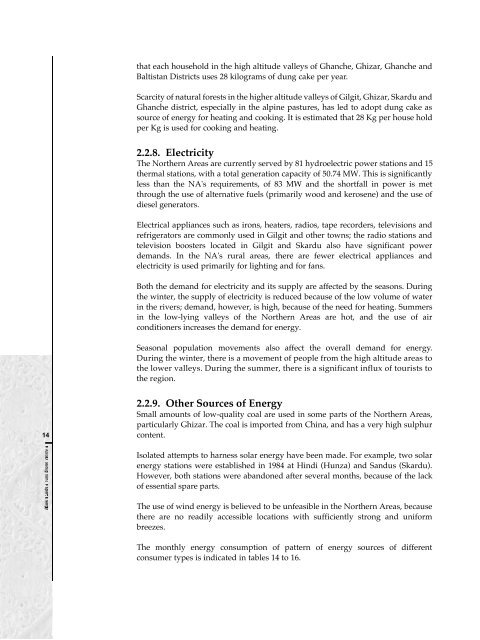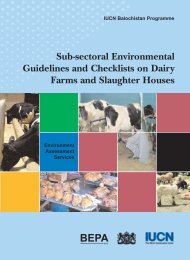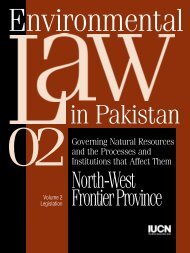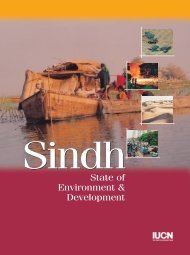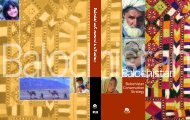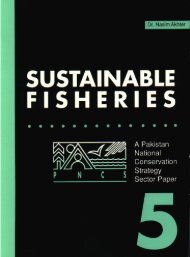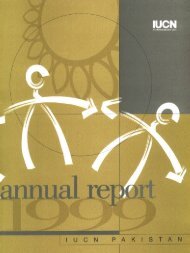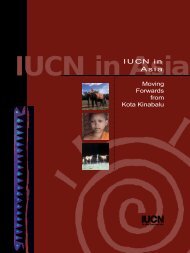Energy - IUCN
Energy - IUCN
Energy - IUCN
You also want an ePaper? Increase the reach of your titles
YUMPU automatically turns print PDFs into web optimized ePapers that Google loves.
that each household in the high altitude valleys of Ghanche, Ghizar, Ghanche and<br />
Baltistan Districts uses 28 kilograms of dung cake per year.<br />
Scarcity of natural forests in the higher altitude valleys of Gilgit, Ghizar, Skardu and<br />
Ghanche district, especially in the alpine pastures, has led to adopt dung cake as<br />
source of energy for heating and cooking. It is estimated that 28 Kg per house hold<br />
per Kg is used for cooking and heating.<br />
2.2.8. Electricity<br />
The Northern Areas are currently served by 81 hydroelectric power stations and 15<br />
thermal stations, with a total generation capacity of 50.74 MW. This is significantly<br />
less than the NA's requirements, of 83 MW and the shortfall in power is met<br />
through the use of alternative fuels (primarily wood and kerosene) and the use of<br />
diesel generators.<br />
Electrical appliances such as irons, heaters, radios, tape recorders, televisions and<br />
refrigerators are commonly used in Gilgit and other towns; the radio stations and<br />
television boosters located in Gilgit and Skardu also have significant power<br />
demands. In the NA's rural areas, there are fewer electrical appliances and<br />
electricity is used primarily for lighting and for fans.<br />
Both the demand for electricity and its supply are affected by the seasons. During<br />
the winter, the supply of electricity is reduced because of the low volume of water<br />
in the rivers; demand, however, is high, because of the need for heating. Summers<br />
in the low-lying valleys of the Northern Areas are hot, and the use of air<br />
conditioners increases the demand for energy.<br />
Seasonal population movements also affect the overall demand for energ y.<br />
During the winter, there is a movement of people from the high altitude areas to<br />
the lower valleys. During the summer, there is a significant influx of tourists to<br />
the re g i o n .<br />
14<br />
2.2.9. Other Sources of <strong>Energy</strong><br />
Small amounts of low-quality coal are used in some parts of the Northern Areas,<br />
particularly Ghizar. The coal is imported from China, and has a very high sulphur<br />
content.<br />
Isolated attempts to harness solar energy have been made. For example, two solar<br />
energy stations were established in 1984 at Hindi (Hunza) and Sandus (Skardu).<br />
However, both stations were abandoned after several months, because of the lack<br />
of essential spare parts.<br />
The use of wind energy is believed to be unfeasible in the Northern Areas, because<br />
there are no readily accessible locations with sufficiently strong and uniform<br />
breezes.<br />
The monthly energy consumption of pattern of energy sources of diff e re n t<br />
consumer types is indicated in tables 14 to 16.


